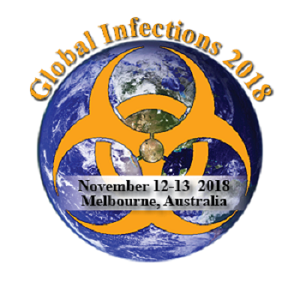Yana Bai
Lanzhou University School of Public Health, Lanzhou,China
Title: Influence Factors of ALT, AST, and GGT in the Anti-HBs Positive Population in Jinchang Cohort
Biography
Biography: Yana Bai
Abstract
Statement of the Problem: To understand hepatitis B infection in Jinchang Cohort. To explore the influence factors of abnormal levels of ALT, AST, and GGT in the anti-HBs positive population without a history of hepatitis and provide the basic evidence for it´s prevention. Methodology & Theoretical Orientation: In 44,169 objects from the Jinchang Cohort during June 2011 to December 2013, And to investigate the detection rates of abnormal levels of alaninetransaminase (ALT), aspartate aminotransferase (AST), and gamma-glutamyl transferase (GGT) by analyzing various demographic characteristics, dietetic behaviors and living habits, occupational exposures, and lipid metabolic indexes in the anti-HBs positive population without a history of hepatitis within Jinchang Cohort.
Conclusion & Significance: The positive rates of HBsAg, HBeAg, HBcAb, and HBsAb were 4.66%, 0.42%, 15.64%, and 62.31%, respectively and HBV infection rate was 28.25%, which was higher among males than females,and it peaked in the 60-69 years age group (31.63%) and while with the education level increasing, the infection rate of HBV was gradually decreased. Monthly average family income was protective against abnormal levels of ALT, AST, and GGT.The positive rates of HbsAg+HbeAb+ HBcAb and HbsAg+HbeAg+HbcAb were 3.74% and 0.41%, respectively. Detection rates of abnormal levels of ALT, AST, and GGT were 18.20%, 11.14%, and 16.64%, respectively, in the cohort, and 16.20%, 9.87%, and 14.86%, respectively, in the anti-HBs positive population without a history of hepatitis. Multivariate analysis showed that gender, age, smoking, alcohol drinking, BMI, TG, TC, UA, and LDL-C were correlated to abnormal levels of ALT, AST, and GGT in the anti-HBs positive population within Jinchang Cohort. The risk of abnormal levels of GGT increased with alcohol drinking index. The risk of abnormal levels of ALT was higher in the iron and sulfur dioxide exposure group than the unexposed group. The risk of abnormal levels of ALT, AST, and GGT was directly related to lipid metabolic indexes, and showed an obvious dose-response relationship with BMI, TG, TC, LDH-C, and UA,and while the high density lipoprotein cholesterol (HDL-C) increasing, the detection rates of abnormal levels of ALT, AST, and GGT was gradually decreased, which showing the obviously dose-response relationship.
Key word: Jinchang Cohort, Hepatitis B infection, Hepatic enzyme, Lipid,metabolic indexes, Multivariate analysis

